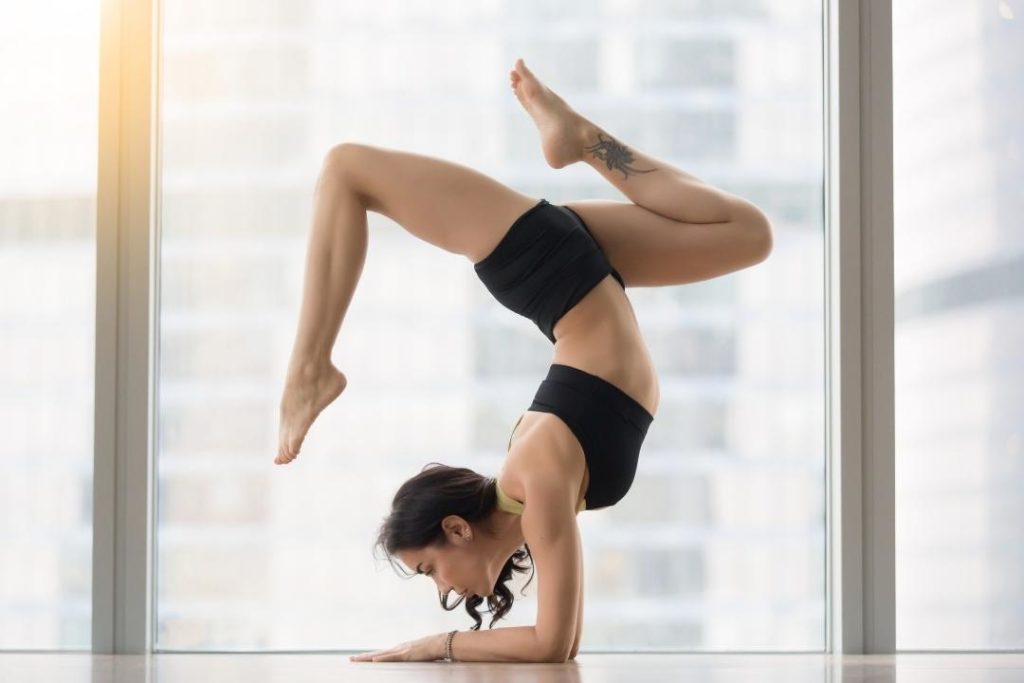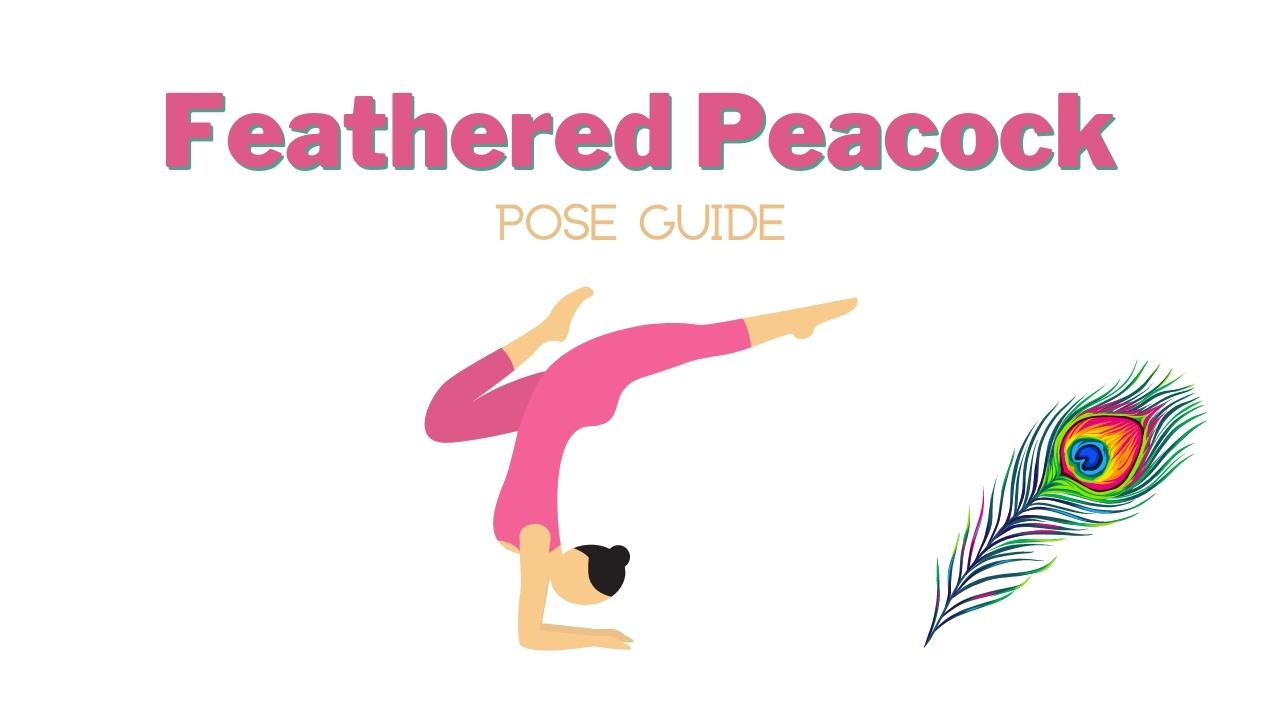Feathered peacock is an inversion Yoga pose that comes with a great many benefits. It is also great preparation for handstand practice since it improves your balance and confidence in inversion poses. This is also a great pose to improve digestion.
Table of Contents
- What is the Feathered Peacock Pose?
- Pose Overview
- Benefits of Mayurasana
- How do you get into Feathered Peacock Pose?
- Feathered Peacock Pose Beginner Tips
- Variations
- Precautions
- Conclusion
What is the Feathered Peacock Pose?
This is an advanced-level inversion pose. You should not try to practice this pose on your own and only under the guidance of an experienced Yoga teacher. It can be intimidating to get into your first inversion pose, so that guidance will be very helpful.
This inversion pose is a great way to improve your balance and confidence as well as your digestion while strengthening your back, shoulders, core, and arms. It’s a pose that has benefits for your whole body.
Pose Overview
Sanskrit Name: Pincha Mayurasana
Western Name: Feathered Peacock Pose
Yoga Pose Type: Inversion
Difficulty: Advanced
Preparation: 3x Sun Salutation A, Dolphin Pose
Follow-up: Handstand
Why we love this Yoga Pose: We love Pincha Mayurasana because it is a very challenging pose that comes with great benefits.
Benefits of Mayurasana
- Strengthens back, shoulders, core, and arms.
- Improves posture.
- Boosts energy.
- Fights fatigue.
- Builds confidence.
- Improves digestion.
- Relieves stress.
- It can help with depression.
- Improves the flow of Prana.
How do you get into Feathered Peacock Pose?

- Start in tabletop.
- Place your forearms one palm’s length away from a wall for support.
- Make sure your forearms are shoulder-width apart and parallel to each other.
- Curl your toes under and enter Dolphin Pose.
- Start walking your feet as far forward as you can. Your hips should come over your shoulders.
- Slowly lift one knee towards your chest.
- Slowly shift your weight and extend your lifted knee back, so you can bring your hips over your elbows.
- Join in with the second leg as you move into Feathered Peacock
Feathered Peacock Pose Beginner Tips
Make sure to practice near a wall for extra support in case you fall over. We highly recommend practicing Feathered Peacock with an experienced Yoga teacher if it is your first time trying out this inversion pose.
Variations
Before attempting the Feathered Peacock pose, it is a good idea to practice Dolphin Pose to build up strength and stamina.
Dolphin pose is a challenging position in and of itself, so it is a great way to get comfortable with staying in Dolphin pose for an extended amount of time as a preparation for Pichna Mayurasana. This is especially true if your shoulders are tight and you feel discomfort in your shoulder girdle while being in Dolphin pose.
Once those shoulders are opened up, it’s time to progress to Feathered Peacock!
Precautions
Do not practice this pose if you are pregnant or if you have any injuries in your back, neck, or shoulders. If you have high blood pressure, please be cautious with this pose and only practice under the guidance of an experienced Yoga teacher.
It is normal to feel some discomfort in your shoulders when you first start practicing this pose. If you feel any sharp pain, please stop and come out of the pose. If you are new to Yoga, we recommend starting with a beginner’s class to get to know the basic Yoga poses before moving on to more advanced poses like Feathered Peacock.
Conclusion
In conclusion, the feathered peacock is an advanced inversion pose that comes with many benefits. It is important to only practice this pose under the guidance of an experienced Yoga teacher and to be aware of any injuries you may have in your back, neck, or shoulders.
This pose is a great way to improve your balance and confidence while also strengthening your back, shoulders, core, and arms. Try out feathered peacock the next time you look for a challenging pose with many benefits!
